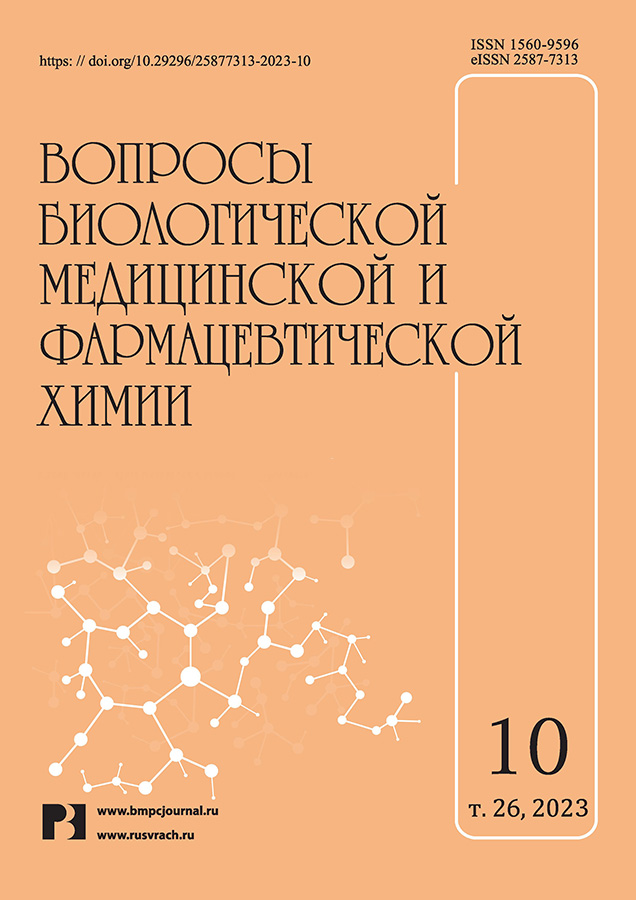Methods of sterilization of medical polymer composites based on polyhydroxybutyrate with elastomeric additive
- Authors: Povernov P.A.1, Shibryaeva L.S.1,2
-
Affiliations:
- N.M. Emanuel Institute of Biochemical Physics of RAS
- MIREA – RTU
- Issue: Vol 26, No 10 (2023)
- Pages: 38-42
- Section: Biological chemistry
- URL: https://journals.eco-vector.com/1560-9596/article/view/621587
- DOI: https://doi.org/10.29296/25877313-2023-10-06
- ID: 621587
Cite item
Abstract
Introduction. Polyhydroxybutyrate is a biodegradable and completely biocompatible component, and in combination with various modifying additives can be suitable for the manufacture of medical products used in surgical practice as bone implants or their parts. There implants have a number of advantages over traditional metal products, but for their integration into the body they require thorough sterilization cleaning, which in the case of polymer compositions has a number of limitations associated with the possible destruction of the material structure during various cleaning stages.
Purpose of the study. Find optimal methods for sterilization and disinfection of materials based on polyhydroxybutyrate (PHB) and an elastomeric additive – butadiene-nitrile rubber (NBR-28).
Material and methods. Two-component PHB-NBR compositions with PHB content from 30 to 90% were studied. Four methods of sterilization and disinfection were used: autoclaving, air sterilization, disinfection with chlorine solution and ethanol solution. Determined mechanical characteristics are strength and elongation of the material at break. Sterility control – by the method of washings with subsequent observation of the growth of bacteria and fungi in Sabouraud's medium and thioglycollate medium.
Results. Sterilized and disinfected samples showed no microbial growth in both culture media. No change in mechanical characteristics was detected for samples subjected to solution cleaning methods. High temperature cleaning reduced the mechanical properties of samples by 20–80% depending on the sterilization mode.
Conclusions. The data obtained show that for sterilization and disinfection of PCM based on the biodegradable polymer PHB, solution methods are suitable without restrictions and the autoclave sterilization method is suitable with minor restrictions, while air sterilization leads to the destruction of PCM.
Full Text
About the authors
P. A. Povernov
N.M. Emanuel Institute of Biochemical Physics of RAS
Author for correspondence.
Email: pav3444@yandex.ru
Scopus Author ID: 57210264564
ResearcherId: ABC-5732-2021
Post-graduate Student, Junior Researcher, Laboratory of Physico-Chemistry of Compositions of Synthetic and Natural Polymers
Russian Federation, MoscowL. S. Shibryaeva
N.M. Emanuel Institute of Biochemical Physics of RAS; MIREA – RTU
Email: pav3444@yandex.ru
Scopus Author ID: 7003539026
ResearcherId: A-7634-2014
Dr.Sc. (Chem.), Professor, Leading Researcher, Laboratory of Physico-Chemistry of Compositions of Synthetic and Natural Polymers; Professor, F.F. Koshelev Department of Chemistry and Technology of Processing of Elastomers, M.V. Lomonosov Institute of Fine Chemical Technologies,
Russian Federation, Moscow; MoscowReferences
- Rebelo R., Fernandes M., Fangueiro R. Biopolymers in medical implants: A brief review. Procedia Eng. 2017; 200: 236–243.
- Povernov P.A., Shibryaeva L.S., Lusova L.R., Popov A.A. Modern polymer composite materials for bone surgery: Problems and prospects. Fine Chemical Technologies. 2022; 17(6): 514–536.
- Artsis M.I., Bonartsev A.P., Iordanskii A.L., et al. Biodegradation and Medical Application of Microbial Poly (3-hydroxybutyrate). Mol. Cryst. Liq. Cryst. 2012; 555(1): 232–262.
- Dempsey D.J., Thirucote R.R. Sterilization of Medical Devices: A Review. Journal of Biomaterials Applications. 1988; 3(3): 454–523.
- Told R., Ujfalusi Z., Pentek A., Kerenyi M et al. A state-of-the-art guide to the sterilization of thermoplastic polymers and resin materials used in the additive manufacturing of medical devices. Materials & Design. 2022; 223: 111119.
- Vergara-Porras B., Gracida-Rodriguez J. N., Perez-Guevara F. Thermal processing influence on mechanical, thermal, and biodegradation behavior in poly(β-hydroxybutyrate)/poly(ϵ-caprolactone) blends: a descriptive model. J. Appl. Polym. Sci. 2016; 133: 1–12.
- Kervran M., Vagner C., Cochez M., Ponçot M. et al. Thermal degradation of polylactic acid (PLA)/polyhydroxybutyrate (PHB) blends: A systematic review. Polymer Degradation and Stability. 2022; 201: 109995.
- Parveen S., Kaur S., David S. A. W., Kenney J. L. et al. Evaluation of growth based rapid microbiological methods for sterility testing of vaccines and other biological products. Vaccine. 2011; 29(45): 8012–8023.
Supplementary files










